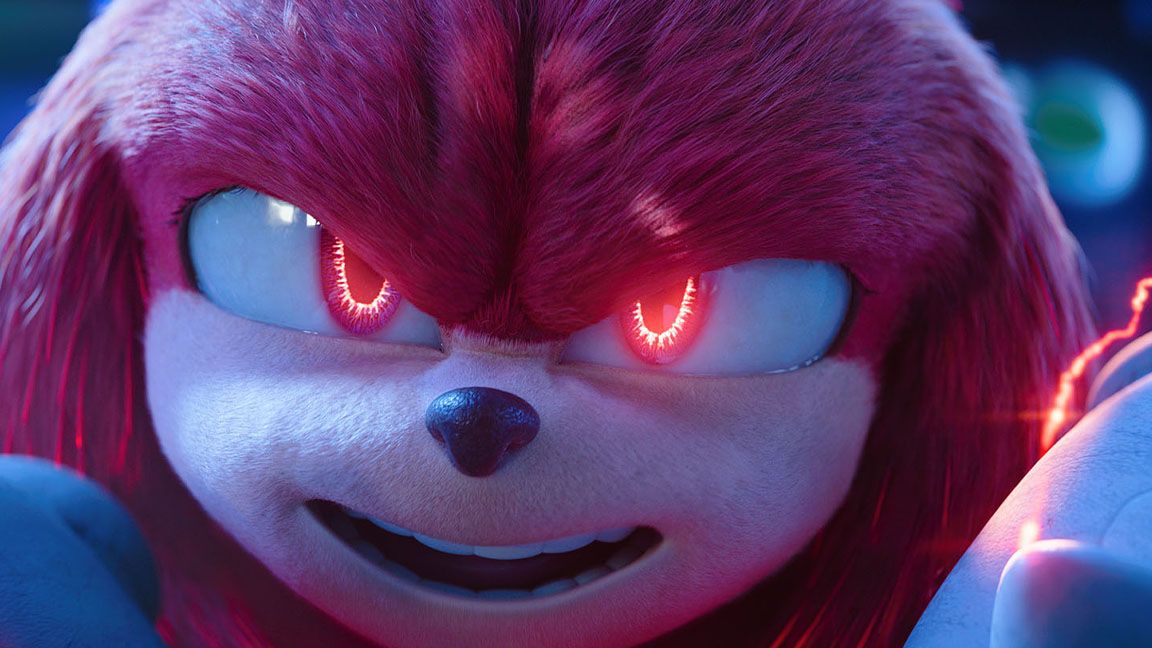If you’re seeking pro animation advice then the team at Outpost, who have just wrapped up work on Knuckles, a miniseries created for the streaming service Paramount+, based on the Sonic the Hedgehog video game series published by Sega (catch up with the best retro game consoles), is a good place to start.
The team at Outpost has previously worked on some of the most acclaimed and technically ground-breaking projects of the last ten years, including Apple’s lauded Prehistoric Planet, The Lion King, and the best VFX Academy Award winners, The Jungle Book and Blade Runner 2049.
Below I sit down with animation supervisors Oliver Dale and Peta Bayley, and creature supervisor Dan Zelcs, to discover the secret of creating believable creatures and characters, and the nuances of character performance, whether entirely photo-real or wildly stylised.
If you’re inspired by the Outpost team, and want to get started in 3D animation, then read up on how to get started with our guides to the best 3D animation software and best laptops for animation.
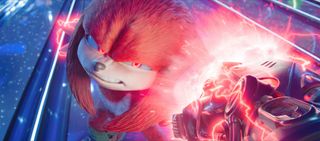
Creatures and performance
Creating believable creatures and characters is no easy task. How do you get it so close to perfection every time?
Oliver Dale: The obvious answer is that it’s the combination of lots of hard work from many very skilled artists with specific skill sets. Rigs, shaders, fur/muscles sims, FX, lighting, and comp all play a massive part in the end result.
I think probably the most important thing (not just in animation) is understanding what you’re trying to achieve, whether it be a character, show, or shot. Why are we doing it like that? What is the purpose of this shot in the edit?
Understanding that shot’s purpose and keeping it in mind while adding detail and making the hundreds of other decisions that go into the final shot means that when it makes it into the final cut, all the elements come together to tell the story in the best way.
The other thing that immediately came to mind was reference. If you can shoot or find some great reference, it can almost feel like cheating. There are so many lovely details you can use that, from the start, a character can come to life from just a few poses.
More often than not, when I’m struggling with a shot, it’s because I’ve been rushing and haven’t taken time to shoot reference. I’m not talking about matching references 1 to 1 but picking out specific things can really help. It may be the pose of a hand, an interesting silhouette, or the timing of a weight shift and how that works with an overall motion.
Dan Zelcs: Making anything believable, be it a photoreal animal, an alien, or a Pokémon, always starts with a lot of observation, reference gathering, and study. Then we use that reference to drive every stage of the build process: modelling, texturing, grooming, lookdev, rigging, animation, hair and flesh simulation, and final rendering. Throughout the whole project, we are continually referring back to our reference material to make sure that we are staying true to our character and to reality.
Peta Bayley: Deep diving into the story and characters is also essential to creating believable creatures and characters. Every project is pretty unique and gives you the opportunity to immerse yourself in learning anatomy, personality, character development, and storylines, in addition to following the storyboards or previs that come with your shots.
The more knowledge you can gather, the better decisions you can make with your animation. Understanding the physical limitations, scale, weight, and emotional states will impact how your character will move, stand, act, react, and speak, so that you are always considering these factors as you work.
When you think of your friends or family members, you become so familiar with the way they stand, how they walk, and their unique gestures or expressions that you can probably identify them from far away without seeing their face or recognising their clothes. You can often anticipate how they might act or react in a situation based on their personalities and experiences. It’s these extra layers of details that animators like to draw from and incorporate to define a character’s movement.

How do you get the performance correct so the personalities of the characters shine through?
OD: Through a lot of discussion between directors and supervisors. Ideally, you have a clear idea of how you want the character to behave before starting any work. Animating character tests, movement studies, acting, and shooting references can all help ‘find’ a character and make for good points of discussion with VFX supervisors and directors.
These might be an exploration of a key character moment, a piece of action from the script, or even just an interesting walk cycle—things that can go on to inform more of the animation decisions. A lot of personality is discovered through tests like these; even something small like a certain look or expression might capture something interesting that you want to build on and you can slowly start refining the way they move and express themselves.
For example, a lot of thought had gone into what worked and what didn’t with Sonic and Knuckles regarding facial expressions while making the first two movies, but Knuckles had never really needed the expressive range required to carry his own show. How do you make a character that has an angry brow built into their design look happy without losing the look of the character? Finding that range was key to finding Knuckles’ personality as he went on his quest.
You obviously want the performance to be consistent across each sequence, even though they are likely being animated by different artists. Movement and expressions need to feel like they are coming from the same character, so we’ll often build a library of poses that can be dropped into a new scene as a starting point to maintain the feeling of the same character.
PB: Understanding the story, background, and where and how the characters and creatures fit in and relate to each other is important for making the best performance decisions in context for the development of any character.
The more information you have about your character, the better prepared you are to choose the right movement, pose or expression. This can be less obvious when there are multiple vendors working on different parts of a story with or without the same characters and this information might be limited. We all know that animation can be quite a slow process but before you get to actually moving your character, this stage of gathering information is additional time well spent.
Knowing where the focus needs to be, not upstaging or drawing attention away from the story, and being consistent with their established character traits, behaviours and attitudes helps maintain the believability. Often, we will gather information, references, and examples to create character ‘bibles’ for the team to refer back to. As we learn more about our characters or creatures, this bank of information can be updated, modified, or expanded so the whole team can pull in the same direction.
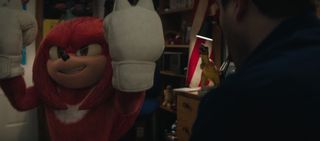
Every character is unique. What techniques do you use to add nuance to a character’s performance.
OD: Part of the fun of being an animator is getting to do things that wouldn’t be classed as ‘work’ in any other profession. While shooting reference, I’ve run up and down the road outside my house using a blanket as a cape and a huge bit of wood as a sword, filmed myself in slow motion falling over, and strapped on a helmet to charge like a bull into a tree, all to try to get an extra little detail to steal and add to the animation.
I like to think about the practicalities of a character’s design or costume to see if that might introduce some interesting limitations. For example, how big is your character? Are they a herbivore/carnivore, quadruped/biped? What is their level of intelligence? Are they capable of speech? Can they use tools? Even with these few basic questions, you can start to form an idea of how a character might move, react, or emote, so the animation starts to feel unique.
PB: Often the moments in between dialogue or large action are the more subtle moments when you really get to see the characters and get a sense of their personality and their mental state. Are they fidgety or restless? Nervous, tired, or uninterested, confident or excited?
All of these thoughts and emotions can be conveyed in very subtle gestures, expressions, or postures, and if they’re not consistent with the character’s state of mind, they will betray the CG nature of their performance. Breathing, eye darts, brow changes, and eyelines can all be very informative to the audience in such an understated way that they aren’t always fully aware of but will subconsciously pick up on and believe.
How do you animate speeding anthropomorphic characters such as Knuckles?
OD: Knuckles is essentially a cartoon character in the real world; he has an oversized head, hands, feet, a small body, and skinny legs. When he runs or punches something, he breaks the laws of physics so you can’t animate him in a completely realistic way, but he does need to feel grounded in our reality. For the action, we relied on strong exaggerated posing that we knew would be readable even with motion blur, layers of FX, and animation with the final image in mind, making sure to frame for the FX elements.
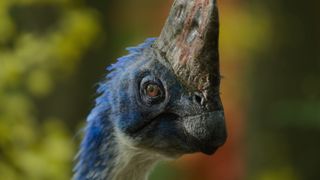
What have been your favourite characters to work on over the years, and why?
DZ: I loved working on the Xenomorph for Alien Covenant. The Alien films and Giger’s artwork were a huge inspiration for me growing up, so being able to help shape new alien creatures, staying true to the originals and receiving notes and advice from Ridley Scott himself was a career high.
On the other end of the spectrum, working on Pickachu for Detective Pikachu was a hugely enjoyable process. I had a team of dedicated artists that helped shape the character build for Pikachu over the course of a year before shot production started, so we were able to get deep into the process of making every aspect of the character appealing: the facial expressions and subtleties to the fur were huge challenges, and we learned a lot about the value of ‘appeal’.
OD: For me, three shows come to mind; ‘Guardians of the Galaxy’, ‘The Jungle Book’, and ‘Prehistoric Planet’.
‘Guardians’ is the only Marvel show I’ve worked on, and it was peak superhero hype. Rocket and Groot were the first hero CG characters I’d animated, their designs and attitude were great fun.
‘The Jungle Book’ was the first time I worked with Andy Jones (animation director) who is incredible. Shere Khan was such a pleasure to animate, lovely deliberate movements and a sense of weight and presence.
But ‘Prehistoric Planet’ is my favourite. Working with Andy Jones and Adam Valdez again I had a chance to work on previs and then supervise animation on seasons 1 and 2. It was such a great collaboration between the BBC natural history unit, Darren Naish and his team of palaeontologists, and the VFX artists all had real mutual appreciation for what the others did. Being a child of the 90s (and being very affected by seeing Jurassic Park in the cinema) animating a T-rex was one to tick off the bucket list and probably my all-time favourite.
PB: Reepicheep from the Narnia films was a favourite of mine. He’s a small, charming little fencing mouse with a big personality. He had such a physical range of motion, moving as both a quadruped and biped, as well as expressive dialogue and an attitude! When rendered, it was really rather adorable.
As Oli said, Rocket from Guardians of the Galaxy was also a lot of fun. He too had a lot of attitude—snarky but cool—and plenty of dialogue and expression. His partner in crime, Groot, was one of my favourites too. Using the same line of dialogue (“I am Groot”), and with a somewhat restricted range of motion in his face and body, he still managed to convey so much emotion through his posture and movement.
Also, Korg (Thor: Love and Thunder), voiced by Taika Waititi has a performance so dry that the delivery of his lines makes me laugh every time! The contrast of his physical strength, scale, and physical characteristics to his rather jovial personality was really fun to work with.

Photorealism vs stylised
Do you prefer working on more photorealistic or stylised projects? And why?
DZ: I enjoy both ends of the spectrum; it is a nice change to jump between styles. Both have their challenges, and the more projects I work on, the more I have grown to respect and understand those different needs, and I think working at one end of the spectrum can help influence work at the other end.
For example, working on a photoreal human like Spengler’s ghost in Ghostbusters: Afterlife allowed us to get into the minute details of the human face and how different emotions and muscle triggers interplay with subtle facial wrinkles and folds. Then, taking that level of fine detail and mapping it to a project with characters like Knuckles or Pikachu, they still have to exhibit emotion and range in the face, but there is a wealth of drawn references to influence how we can make that more appealing. Building a facial setup that can trigger emotion while depicting neat curves and forms that maintain the appeal of the original drawings is a great challenge.
So, if I had to pick one, I think it would tend toward the stylised end of the spectrum: it allows us to take all of the photorealistic knowledge we have and add in that layer of appeal.
OD: The shows I find most fun generally have an element of both; ‘The Jungle Book’ had a storybook feel with talking animals but relied heavily on real-life animal references to keep the characters feeling real. ‘Prehistoric Planet’ was essentially a nature documentary, focusing on animals that have been extinct for 66 million years, so the aim was to get as close to reality as possible while animating creatures that no longer exist.
I hope I never have to pick one; a change is as good as a rest. It’s refreshing to be able to switch between the two. Knuckles was more stylised character animation so now I’m looking forward to getting stuck into something a little more photoreal creature-oriented. Both have different problems to solve and things to learn and (if possible), I like to let that new knowledge settle and percolate a bit before working on something too similar.
PB: Stylised projects often have more exaggerated performances and dialogue, which is a lot of fun for animators in particular, but photorealistic projects require a lot of research and study to get right, which is a challenge I really enjoy.
I think that merging the two can be the most fun for a character animator when you get to mix in some exaggerated acting performances with photoreal weight, timing, and subtleties. Regardless, I really like the challenge of making a creature live in a world we recognise and know so well—believable amongst other creatures or live-action actors.
The subtleties that help integrate the characters in their environment so well that an audience isn’t aware they’re not real are a marker of success and perhaps pushed further in photoreal projects.
Watching the development of your shot leave animation and get the added CFX touches like the movement of the skin or groom that might be squished, jiggled, or manipulated in some way as it contacts somebody or something else, the lighting and comp that integrates the whole image either way is immensely satisfying.
What are the unique challenges that come from working on photorealistic productions?
DZ: Making a character truly believable is a collaboration between many artists who all need to be pulling in the same direction and continually referring back to a bible of reference material. It is an iterative process of building, reviewing, tweaking, and reviewing again—it is a process that needs time to get right.
For any character build, the biggest challenges are having that crystal clear vision from the start that everyone agrees on, then getting the best reference possible and the time to execute it properly. If we are making a photoreal animal or a photoreal human, then the vision is more straightforward, so the challenges are acquiring the best reference—photographs, scans, movement footage, lighting reference—and having the time and the crew to get the build finished to the highest quality.
OD: One of the challenges with photorealistic work is that we all know innately what it is supposed to look like. Everyone will tell you when something doesn’t look right but not many people can pinpoint why it doesn’t look right and, crucially, offer suggestions on how to improve it. We all spend our whole lives subconsciously reading emotions in human faces or predicting the arc of a ball in order to catch it, so those things really stand out to us when they are faked in VFX.
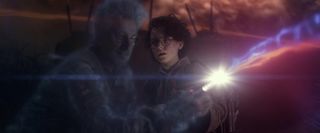
What 3D visualisation tools have you used over the years and what do you use now?
DZ: We’ve experimented with VR headsets for character reviews in the past. It was enlightening to see the character up close to help judge scale and proportion; however, the equipment and space required were a little cumbersome, and it wasn’t an easy process to get it setup, so it fell out of favour. I can definitely see the advantage this has for the process, so I would like to see more of that kind of interactive review process.
Ultimately, though, reviewing the material still comes down to reviewing it in a method similar to the final output, on a screen using sequence editors to be able to collaboratively annotate and draw notes on top of character designs and animations.
OD: I’ve dabbled with 3ds Max, used 3dEqualiser, and Boujou for camera tracking back in the day, played with Blender’s grease pencil, and most recently been exploring animation in Houdini, but most of my time (and professional career) has been spent in Maya.
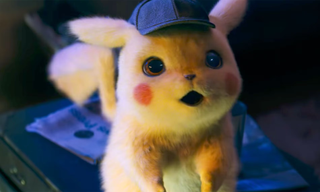
In the industry
What does it feel like to know you’ve worked on Academy Award-winning productions?
OD: Really proud! Growing up I never even considered winning an Oscar, it felt like something that was only given out to people in Hollywood, so it was completely surreal to be holding one in the office in London. I was only 1 of more than 800 artists that contributed to ‘The Jungle Book’ winning the best VFX Oscar and it was definitely a team effort, but it’s something I’ll never forget.
PB: Collaborating on any production creates bonds within the team as you spend so much time working together, problem solving, and relying on each other’s knowledge and skills to do your part, and even more so on a large-scale film like The Jungle Book, which combined the talents of a vast number of artists by investing themselves and their creativity over a long period of time.
Such an experience is remarkably rewarding on its own with the opportunities to learn and grow as an artist, creating and producing great work together, so when the final result receives industry accolades or praise from both colleagues and the general public, who may not know or understand the work that went into it, you feel like you have been a part of something truly special and successful.
Each year we are inspired by different teams producing ever greater work and raising the bar for VFX and though recognition is always nice, I think we all take a lot of pride in our work regardless of awards; otherwise, I’m not sure it would be worth doing!
DZ: I think it’s best to not get too distracted by that side of the film industry. It’s impossible to know how well a project will be received while you are working on it, and quite often we only get to see the shots and sequences we are working on during production, so we don’t see the full picture.
For me, I judge a project by how much I enjoyed working on it, how well I worked with the team, and what I learned or gained from the process. I dedicate myself to whatever project I’m working on, reading up on the history of the characters and their previous stories, gathering reference material, and studying intensely. I immerse myself in the world of the project until it is complete, then move on to the next project.
It is rewarding to see a project succeed once it’s out in the world, but sometimes you work on a project that for one reason or another, doesn’t find its audience or doesn’t resonate with awards panels, which is a shame, but you learn to not take it personally and remember the joy you had while working on that project.
So, in the same way that it pays not to be too sad if the project is not a hit, it pays not to get too dizzy if it’s a massive success. It’s the opportunity to help shape the project itself that is the real reward, and what drives you on to the next one.
What words of encouragement would you give to someone wanting to embark upon a career in creature/character animation?
OD: Don’t take criticism to heart, you’ll be getting a lot of it and it’s the fastest way to get better.
It’s a hard lesson to learn. Most of the people in the VFX industry are very passionate about their work. You have to have this weird mindset where you’re 100% invested in the shot your working on and want it to be the best it can be, then receive client feedback and have to make changes, and have that new version become the thing you want to make as good as you can without being too precious about the work you’re scrapping.
PB: Animation is such a big world of possibilities in genres, styles, design, content, format… I think that someone with an interest in characters and creature animation has so much to explore, making it a terrific career choice for anyone with the interest.
Bringing a CG character or creature to life and imbuing them with a unique spirit and personality, regardless of the direction you choose, is immensely rewarding as a career and you aren’t necessarily confined to any one direction once you begin.
Working in the language of movement is so varied and the ability to express so much in many different ways, from the tiniest subtleties to the most extreme dramatic action, inspires me to always keep learning and developing as an artist. In addition, the opportunities to meet and work with so many talented individuals and creative folks from all over the world make it a pretty awesome life experience!
DZ: For me, working with characters has been a constant joy—a way to study art, nature, science, and animation to help bring characters to life for the big screen and turn my childhood passions into a vocation while making friends for life. There will always be a place for passionate, knowledgeable, and skilled artists to help create stories that influence the next generation, and I wouldn’t want to be anywhere else.
